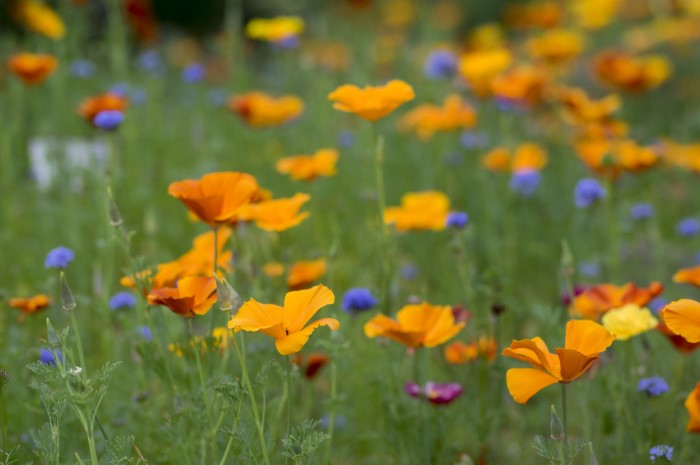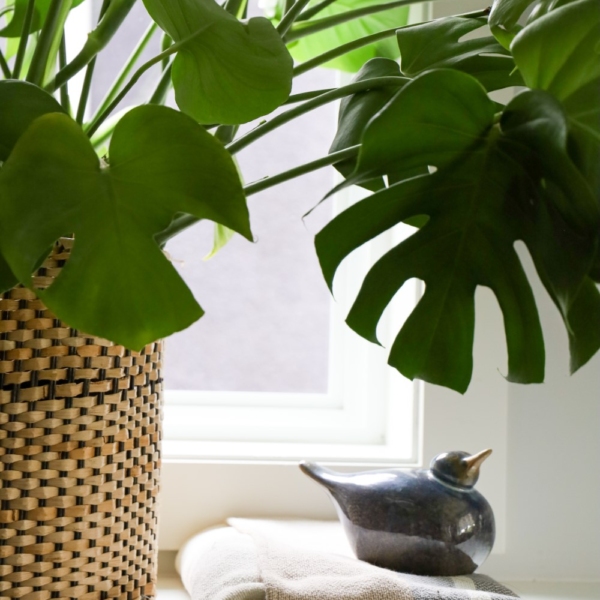Looking for an extra touch of sunshine in your garden beds this year? Let me introduce you to the beautiful California poppy. This delightful perennial provides plenty of beauty with minimal work! Learn how to grow and care for this pretty poppy for a golden addition to your garden.
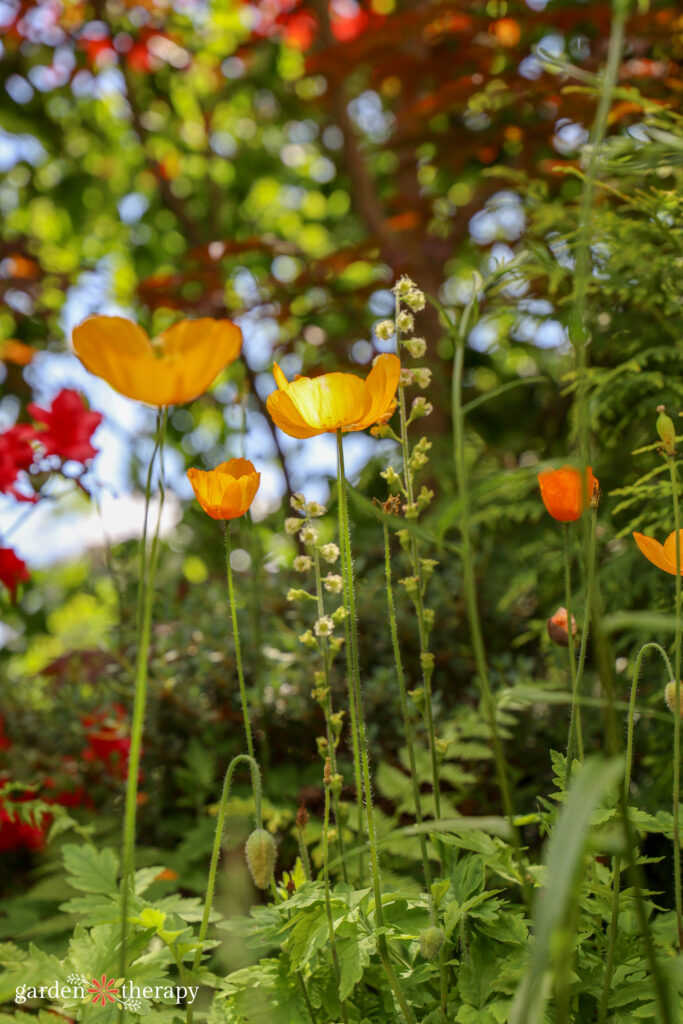
Colour is the root of my happiness in the garden. It’s been said that colour alone can hold power to energize your spirit and bring joy to your life, and I wholeheartedly agree! That’s why I’ve been so inspired by the California poppy this month.
With fall fast approaching and dreary weather about to rear its ugly head, I’m choosing to look forward! What better way to summon sunnier days than by beginning your spring garden prep?
I’ve written about poppies before, but I wanted to dedicate a whole blog to my current favourite poppy. If you’re interested to learn about all the other different types of poppies, check out this post first.
But right now, I have a complete guide for you to explore this exceptional plant. I’ll show you how to prepare for beautiful blossoms and share with you their wide array of uses. One thing is for sure…California poppies are well worth their real estate!
This post will cover…
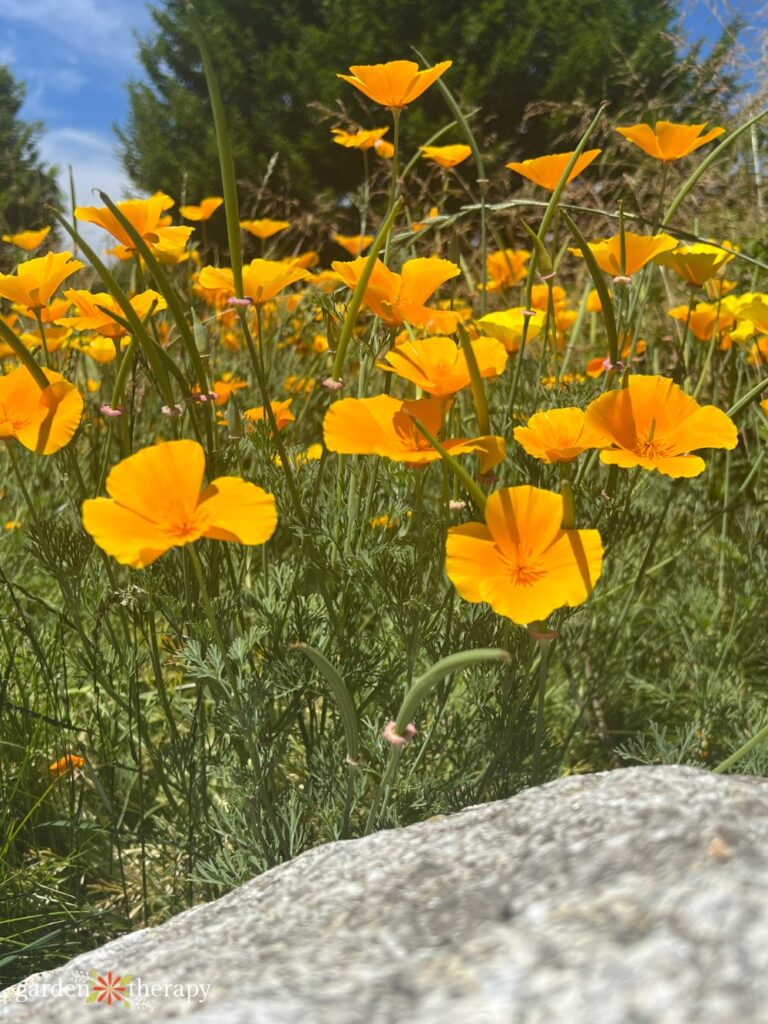
Meet the California Poppy
The California poppy, California’s state flower, is a perennial plant native to the Western United States. It grows widely in Mexico, the U.S., and Canada in several habitats.
You can identify this poppy by its yellow-orange flowers and often darker orange center. Its four smooth petals are accompanied by lacy blue-green foliage. The plant grows between 0.5 and 2 ft tall.
This golden flower is popular in gardens both for its golden glow and its variety of health uses.
Identifying California Poppies
For a long time, I thought I had California poppies growing in my backyard. Imagine my surprise when I realized I had Welsh poppies and not those named after the sunny state. They grow so prolifically and are an equally beautiful wildflower to have.
Luckily, it’s quite easy to identify the difference, even if they appear similar at first glance. The petals on the California poppy have a glow-like appearance as if there’s a light source within. Meanwhile, welsh poppy petals look like paper.
The leaves of Welsh poppies are very feathery and fernlike. California poppies, however, have leaves that more so resemble geraniums.
The seed pods from California poppies also look very different from other poppy flowers’ typical seed heads. They turn into long seed pods resembling a mixture between an elongated stem and a pea pod. Mature pods are brown in colour.
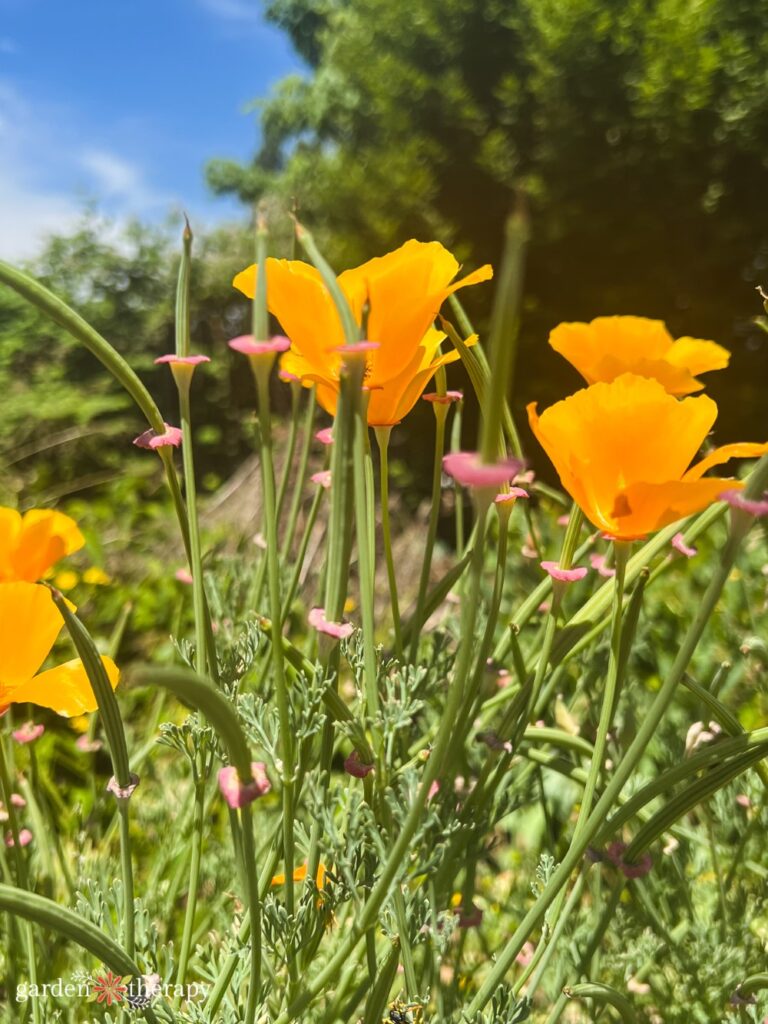
California Poppy Health Benefits
California poppies have a long history of medicinal use dating back to the indigenous people of California. This tradition has continued in today’s herbal medicinal practices. It is often taken in the form of a tincture, capsule, or tea.
California poppy benefits include:
- Stress reduction
- Sleep-aid (for insomnia)
- Aids muscular-retention
- Anti-anxiety
- Natural antidepressant
- Used for nervous bowel conditions
- Aids in hyperactivity
- Reduces headaches and migraines
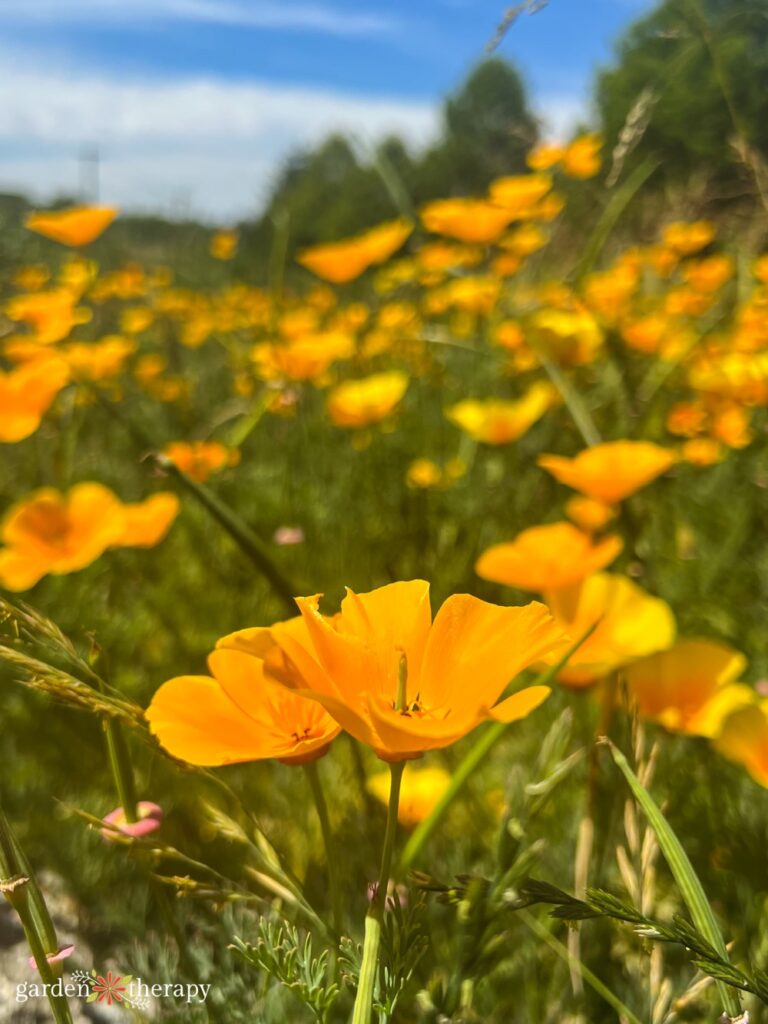
How to Grow the California Poppy
It doesn’t take much work to grow this pretty poppy! You can easily add this colourful flower to your garden with a few simple guidelines.
Planting from Seed
You can directly sow your seeds in spring after the last frost date or in autumn. Fall sowing will help seeds germinate as they go through the natural freeze and thaw cycles. Seeds can also germinate in the spring through the warming soil and spring rain.
Sow seeds ¼ inch deep and 8-10 inches apart from one another. They should sprout within 2-3 weeks.
After germination, pull weeds and thin seedlings that have grown too close (less than 8 inches apart). California poppy seedlings will have a blue-green tint so that you can discern them from the weeds.
Your seedlings should reach full maturity within 55-75 days!
Poppies will bloom throughout spring and early summer in warm climates. The bloom should last about 10 days. After this, the tops will become dormant. You can deadhead poppies to ensure a long flowering period (though it’s not necessary).
Planting in Pots
California Poppies do well in potted containers! Some gardeners prefer it because of their tendency to spread through self-seeding.
- Choose a pot with sufficient drainage and fill it with all-purpose potting soil.
- Sow your seeds on top of the soil without covering them. They need a lot of sunlight!
- Gently water the seeds, making sure to keep the soil moist throughout the growing process.
- Make sure your poppies are getting enough sunlight (at least 6 hours a day!)
- Once they’ve grown to 5 inches, thin seedlings to prevent overcrowding. The strongest seedlings should have at least 6-inches of room between them. This way, they can thrive!
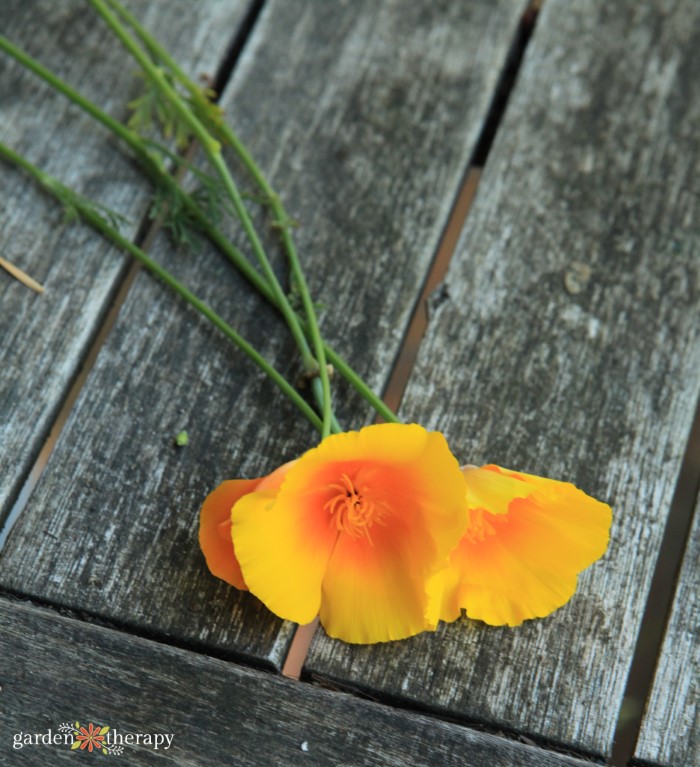
California Poppy Care
This is a super-resilient plant that can survive under less-than-stellar conditions. Still, if you want to help your poppies thrive, there are a few things to keep in mind.
Watering
The California poppy doesn’t need much watering! Only water in extreme drought or dry conditions and let the spring rainfall do most of the work.
Seedlings and young plants, however, will need a little help until they become totally self-sufficient. Water the soil of young plants, letting it dry out between waterings.
Sunlight
California poppies require full sunlight (at least 6 hours!). Plant your seeds in a bright location where they will receive as much sun as possible.
Soil
The California Poppy prefers poor soil conditions but will do fine in rich soil. Their roots require good drainage, so they will not survive in heavy clay soils. Fertilizer is not required as it will not improve the frequency of blooms, only the growth of the foliage.
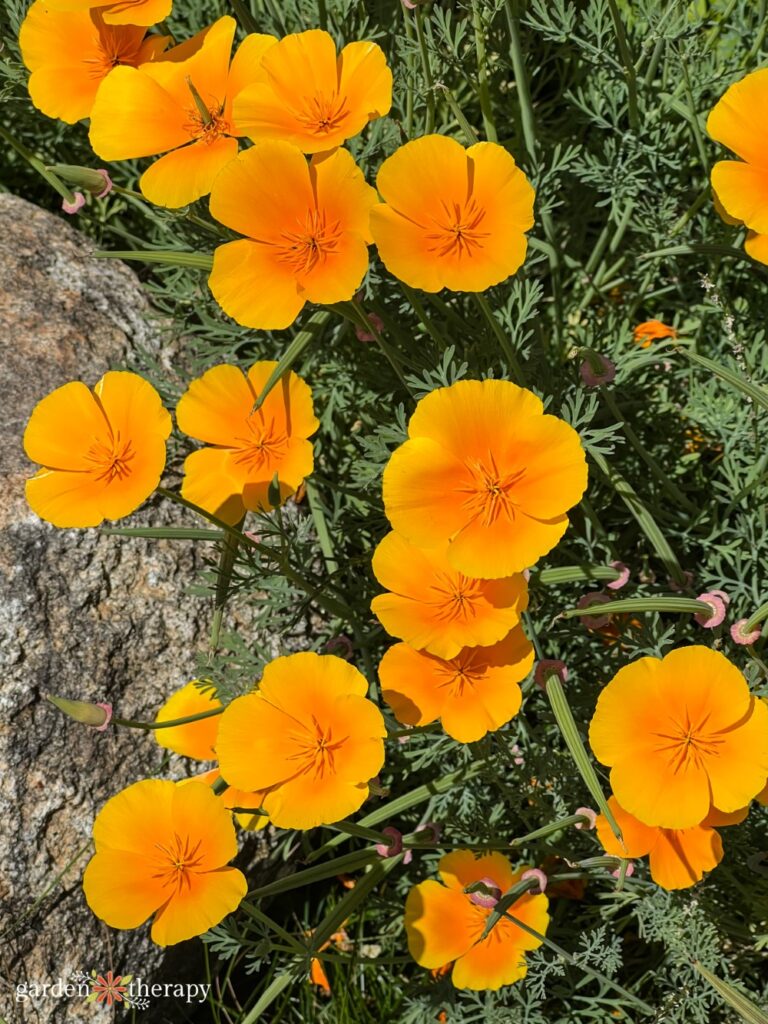
Harvesting the California Poppy
It is a common misconception that it is illegal to pick California poppies (not true!). Still, make sure you’re only harvesting from your own garden. It’s best practice and will help you avoid a possible fine.
The California poppy is a prolific self-seeder, so harvesting seeds for later use isn’t a necessity! Still, it’s an option if you’d like to keep seeds for other projects or to prevent them from self-seeding.
Harvesting California Poppy Seeds
To harvest the seeds, watch until the pods have begun drying out and splitting open. Cut off the buds and keep them in a brown paper bag for a few days. Once the buds are completely dry, seeds can be easily removed.
I love using my poppy seed heads for decoration and to keep on hand for crafting projects.
Harvesting the California Poppy Flower
This plant flowers often, so it’s a great choice to harvest and enjoy! The best time of day to harvest flowers is in the morning after the dew has just dried. Never pick in the height of the afternoon sun!
Use sanitized scissors to cut flowers at the stem and enjoy them in your home. You can also choose to use the flowers for eating or dry them for medicinal purposes.
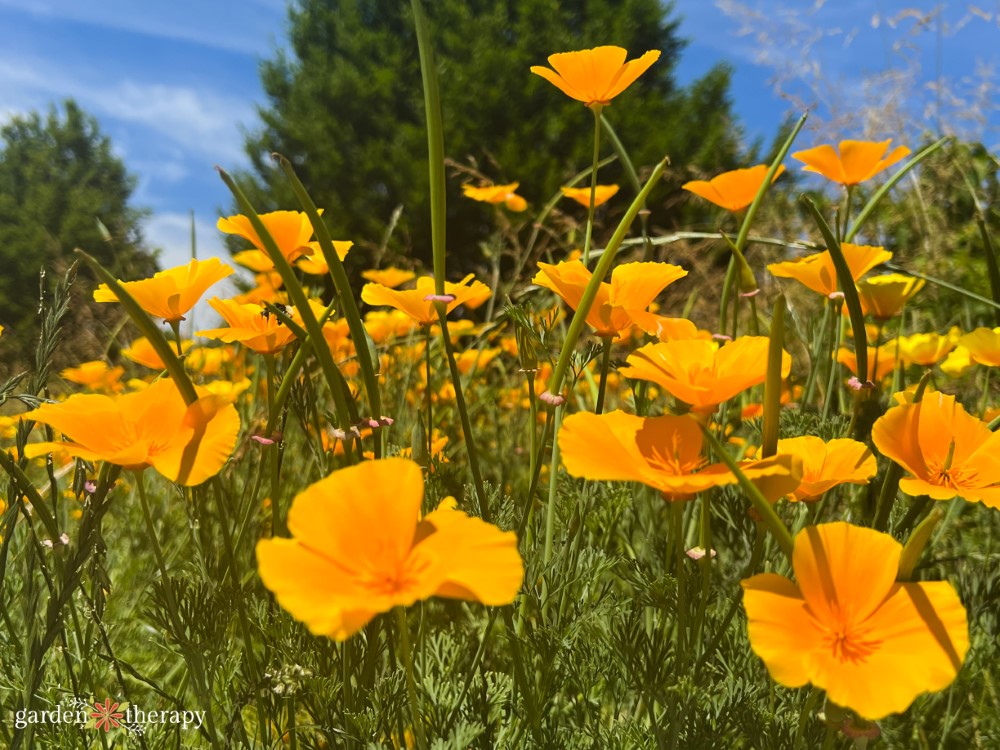
FAQ About this Poppy
Not all poppies are the same! While some poppies are used to make illicit substances, this does not include the California poppy. In layman’s terms, growing the California poppy is absolutely legal.
Happy poppies are forever poppies! These blooms are perennials that will reseed themselves and survive for several years under the right conditions.
They’re such sufficient self-seeders. In fact, sometimes gardeners get more than they bargain for! You can deadhead them if you want to prevent self-seeding.
While some reports claim that California poppies have no reported toxic effects, others claim this can be dose-dependent (meaning high doses have possible negative effects).
To be safe, I’d recommend planting California poppy seeds away from areas that curious pets can access.
If you’ve grown California poppies before, you’ll notice their petals close up at night and on cloudy days. This is a process known as nyctinasty. In dark, cool conditions, the bottom-most petals of poppies actually grow faster than the upper-most petals; this forces the flowers shut.
The California poppy is edible. You can harvest these flowers for a bright addition to your salads. You can also dry the flowers to use in teas or tinctures. Leaves can also be cooked or steeped.
Also, remember this plant is often used for medicinal reasons so always eat with caution!
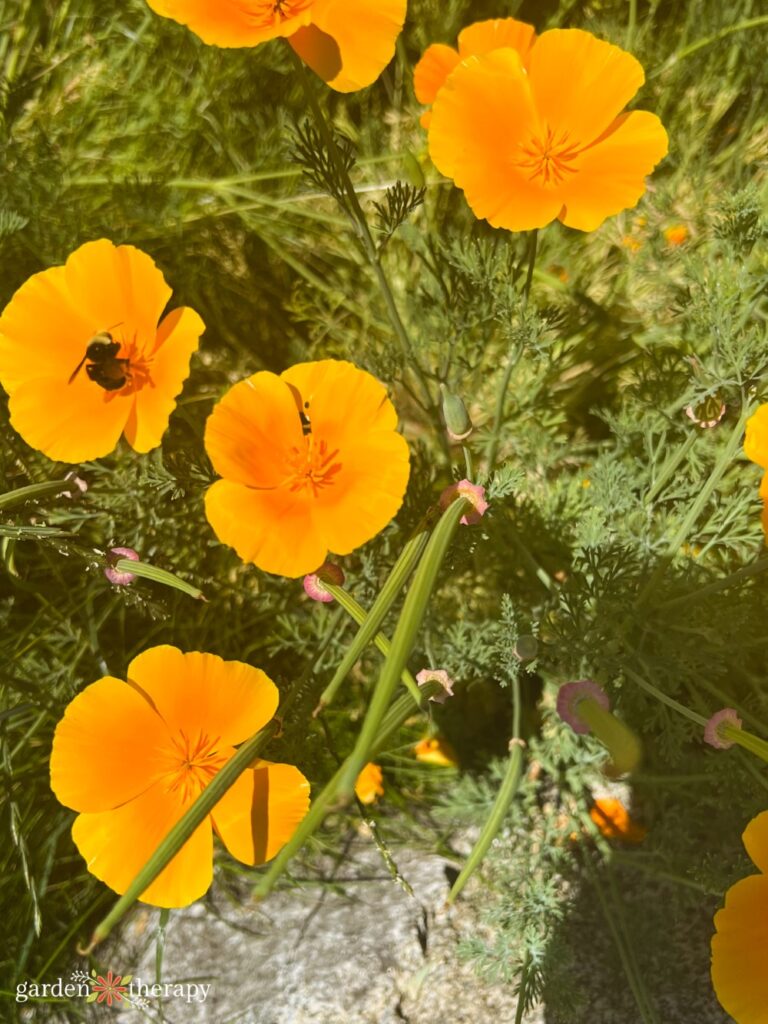
More Flowers to Grow
